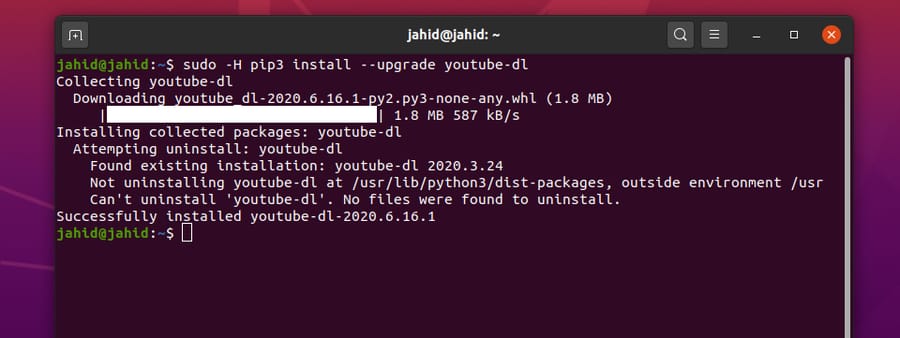

- Pip3 upgrade all packages install#
- Pip3 upgrade all packages update#
- Pip3 upgrade all packages free#
The decision to install topologically is based on the principle that Prior to v6.1.0, pip made no commitments about install order. Installing collected packages foo, baz, bar Installing collected packages baz, bar, foo, quux C:\> py -m pip install bar. Installation Order #Ĭ:\> py -m pip install quux. The format of the JSON report is described in Installation Report. The report can be written to a file, or to standard output (using -report - in In combination with the -dry-run and -ignore-installed itĬan be used to resolve a set of requirements without actually installing them. The install command has a -report option that will generate a JSON report of what Obtaining information about what was installed # (as otherwise the versions would differ). The chosen version is available, it is assumed that any source is acceptable Satisfies the given constraints will be installed (but see hereįor an exception regarding pre-release versions). Once pip has the set of requirements to satisfy, it chooses which version ofĮach requirement to install using the simple rule that the latest version that Than using the egg_info command, but avoids downloading and processingĪny URL may use the #egg=name syntax (see VCS Support) toĮxplicitly state the project name. For sdists located via an index, the filename is parsedįor the name and project version (this is in theory slightly less reliable Specified sdist files, the setup.py egg_info command is used to determine

whl file extension) this can be obtained from Working Out the Name and Version #įor each candidate item, pip needs to know the project name and version. Local file (a sdist or wheel format archive, following the namingĮach item identified is added to the set of requirements to be satisfied by Local directory (which must contain a setup.py, or pip will report When looking at the items to be installed, pip checks what type of item Note that pip install prefers to leave the installed version as-is Install the packages (and uninstall anything being upgraded/replaced). All the dependencies that can be are built into wheels. What will be installed is determined here.īuild wheels.

The user supplied arguments are processed Pip also supports installing from “requirements files”, which provideĪn easy way to specify a whole environment to be installed. PyPI (and other indexes) using requirement specifiers. Linux provides a number of ways to use pip in order to upgrade Python packages, including grep and awk.Py - m pip install. This will upgrade all packages system-wide to the latest version available in the Python Package Index (PyPI).
Pip3 upgrade all packages update#
The easiest way to update all packages in a Windows environment is to use pip in conjunction with Windows PowerShell: To generate a list of all outdated packages: pip list -outdatedĭepending on your operating system or virtual environment, refer to the following sections. In general, you can use the following steps to perform a package upgrade:īefore packages can be updated, ensure that a Python installation containing the necessary files needed for updating packages is in place by following the steps outlined in Ģ.
Pip3 upgrade all packages free#
To ensure your environment doesn’t break on upgrade, you can sign up for a free ActiveState Platform account and import your current requirements.txt, ready to be upgraded. This is because pip and pipenv do not resolve dependencies, unlike the ActiveState Platform. NOTE: be aware that upgrading packages can break your environment by installing incompatible dependencies. However, if your deployment is located in a virtual environment, you should use the Pipenv package manager to update all Python packages. The pip package manager can be used to update one or more packages system-wide. In order to maintain the security and performance of your application, you’ll need to update these packages to a newer version that fixes the issue. Unpinned packages are more common in development environments, where the latest version can offer bug fixes, security patches and even new functionality.Īs packages age, many of them are likely to have vulnerabilities and bugs logged against them.



 0 kommentar(er)
0 kommentar(er)
